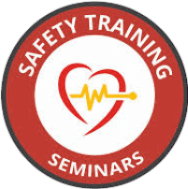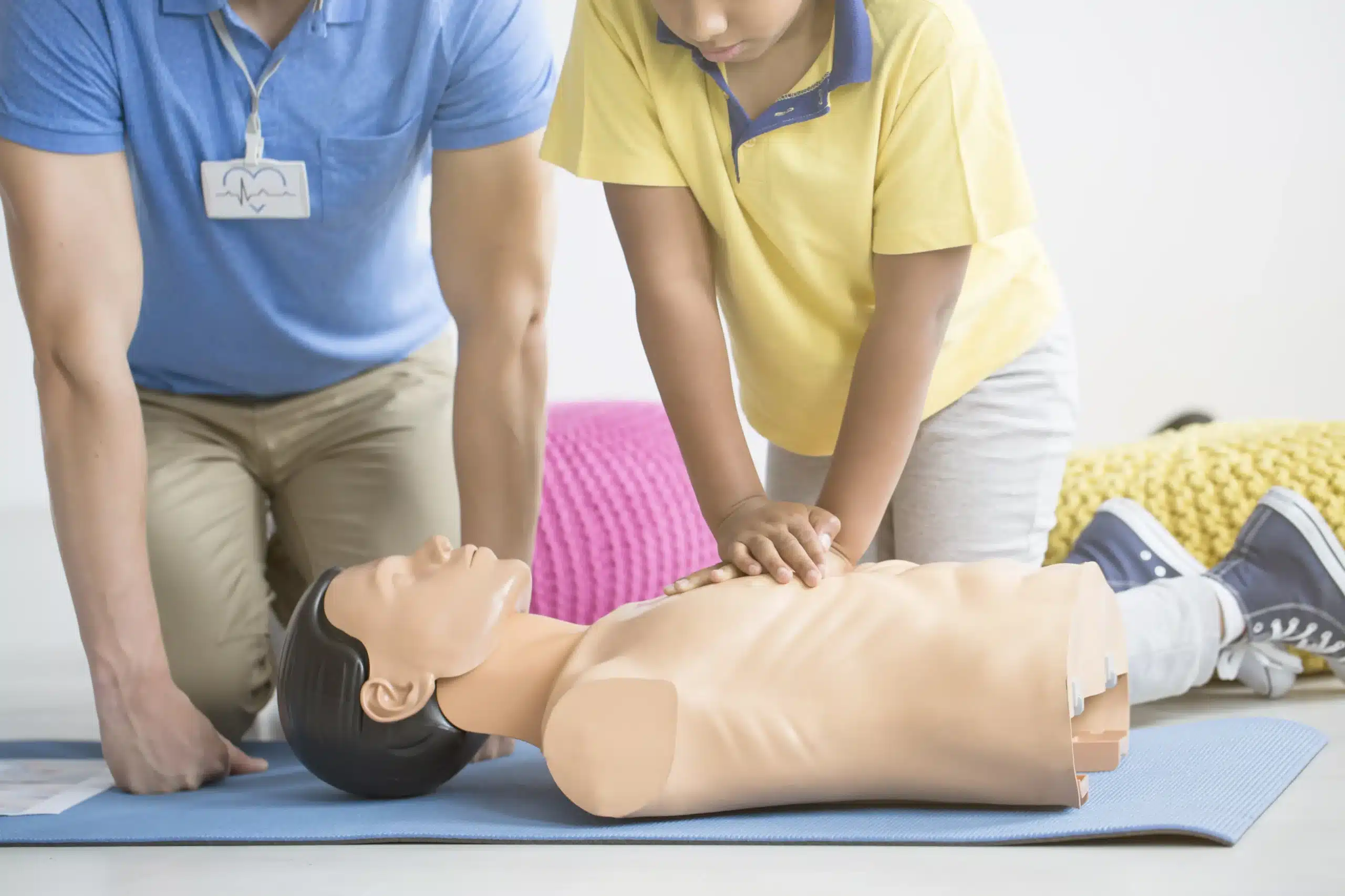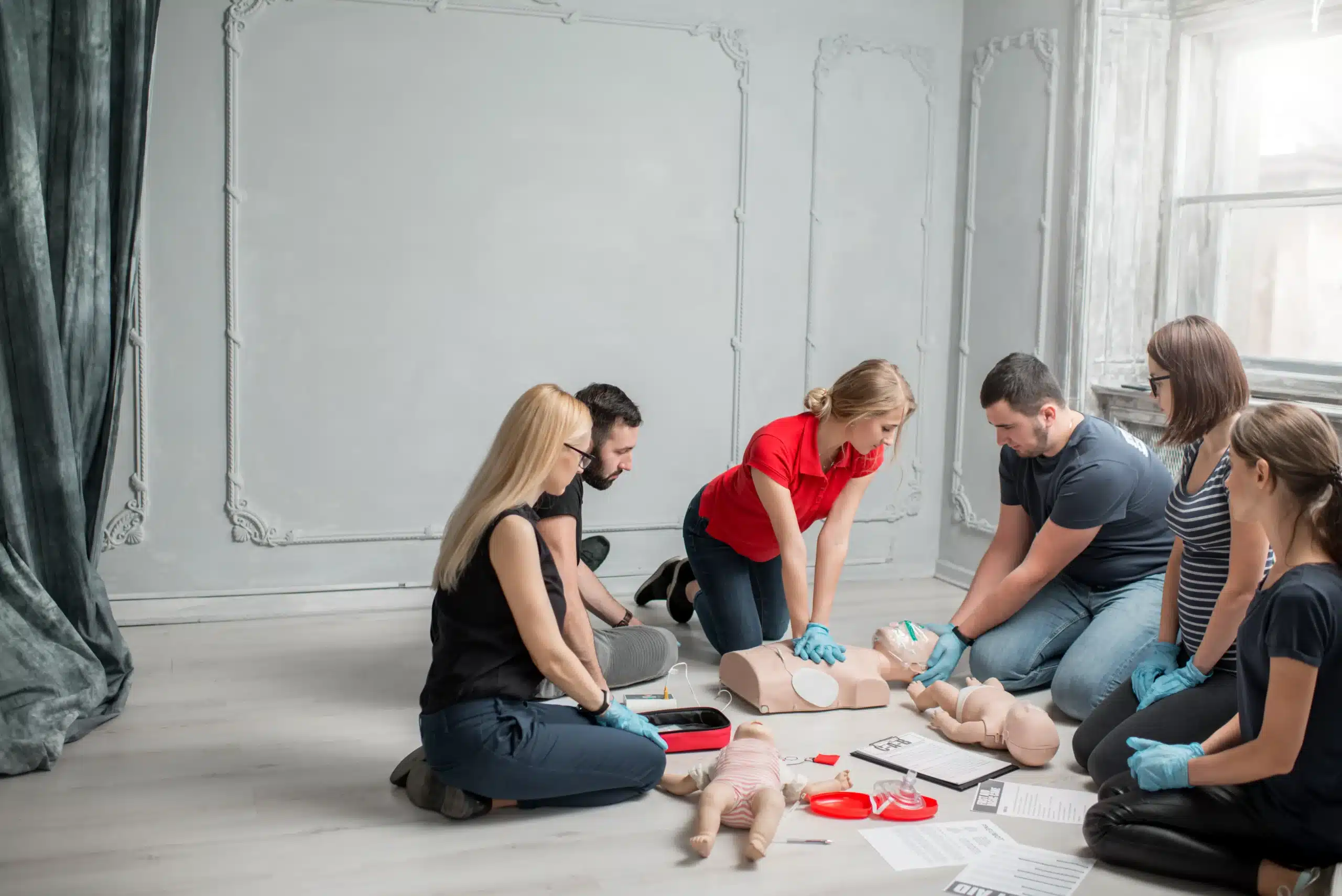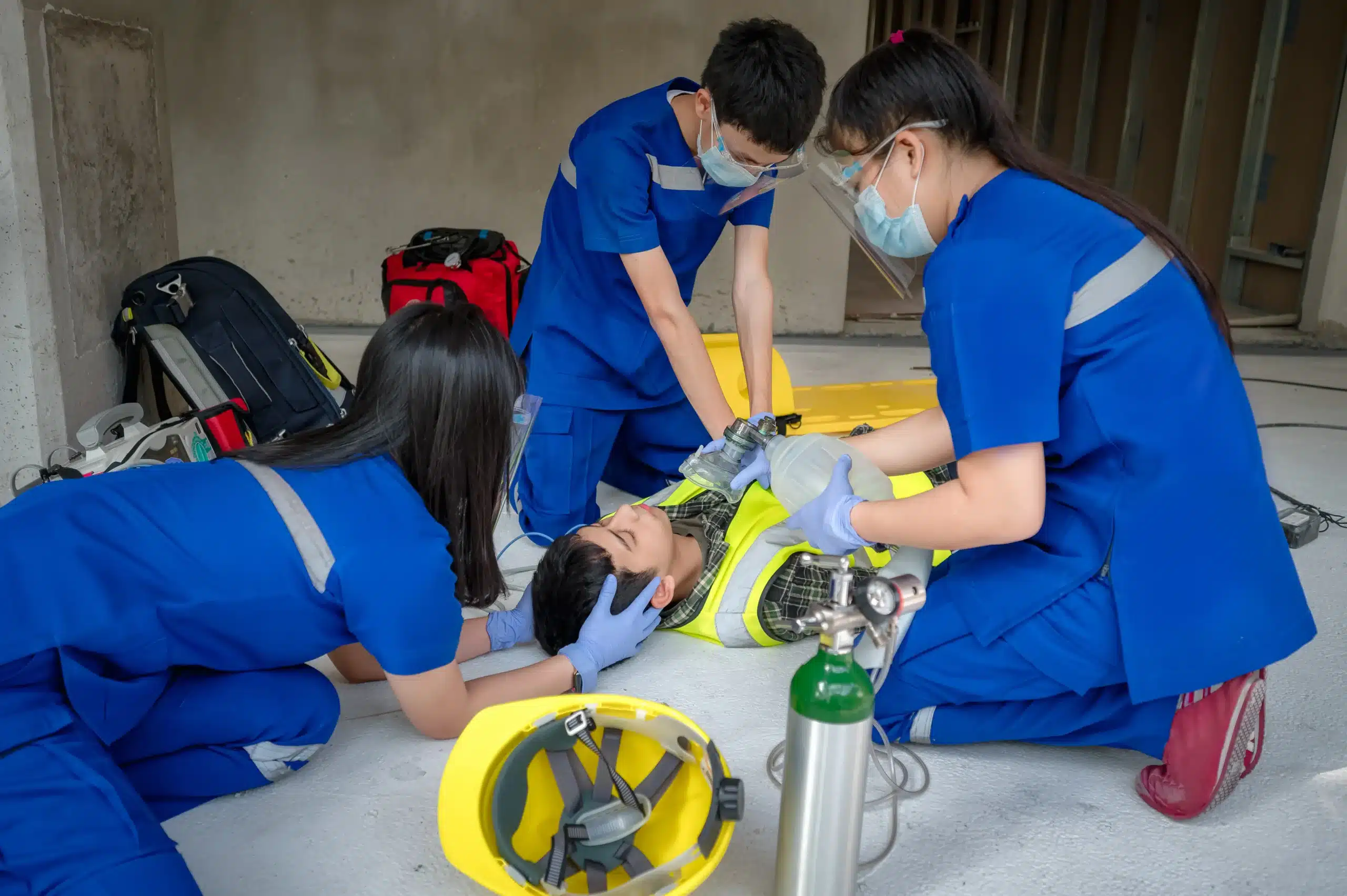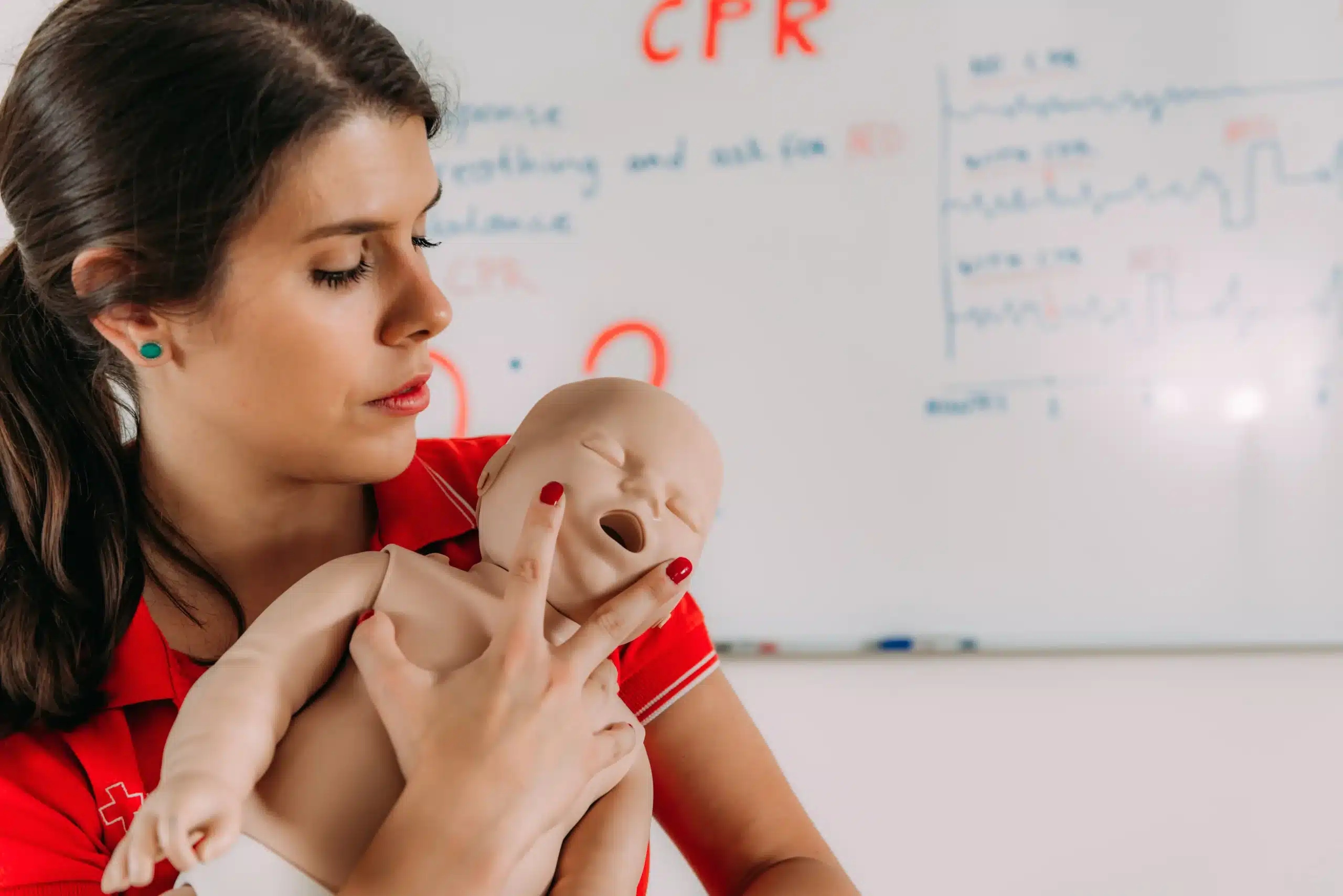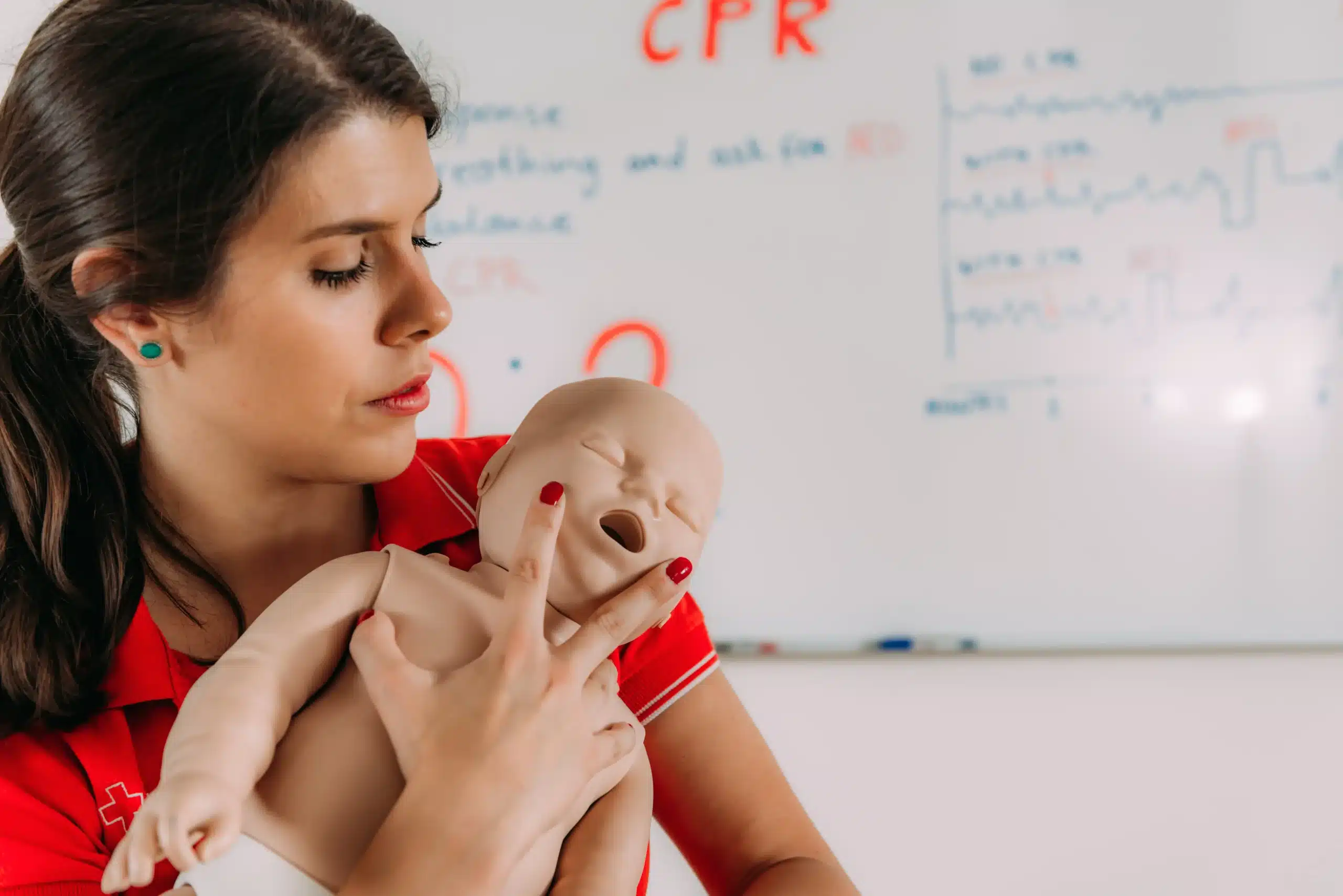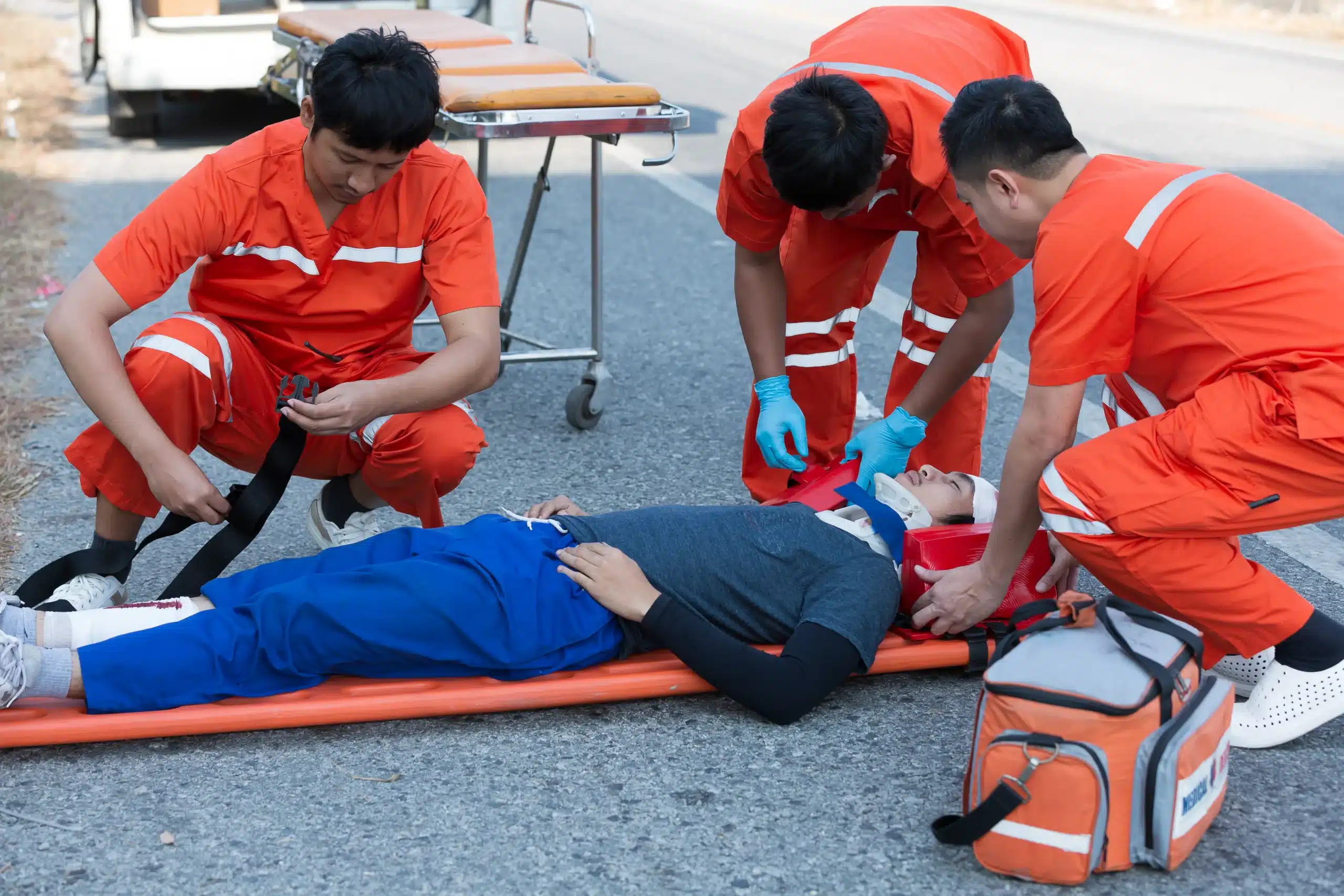Emergencies can happen anytime, anywhere. Would you know what to do if someone near you experienced sudden cardiac arrest? Learning CPR equips you with the skills and confidence to respond effectively in such critical situations. This comprehensive guide covers the essential steps of CPR for Alameda residents, including how to recognize a cardiac emergency, perform chest compressions, and provide rescue breaths. We’ll also explore various CPR training options in Carmichael, Rancho Cordova, and Fair Oaks, discuss the associated costs and benefits, and delve into how CPR training strengthens our community.
Key Takeaways
- CPR skills empower you in emergencies: Learning basic steps, like chest compressions and rescue breaths (if trained), enables effective responses in crises. Find certification through local resources like Carmichael CPR Classes or online courses.
- Choosing the right CPR training matters: Seek accredited providers (e.g., American Heart Association), experienced instructors, and hands-on practice. Select courses aligning with your schedule and needs (basic, pediatric, or healthcare provider CPR).
- Maintain CPR skills for confident action: Regular practice and recertification keep skills current. Even basic CPR knowledge significantly impacts your community’s safety net.
What is CPR?
Cardiopulmonary resuscitation (CPR) is a lifesaving technique used when someone’s heart has stopped beating. It combines chest compressions and rescue breaths to keep blood and oxygen flowing to vital organs until emergency medical services arrive. CPR is essential for people of all ages and can dramatically improve the odds of survival during cardiac arrest. The currently recommended method for performing CPR follows the CAB sequence: Compressions, Airway, and Breathing. This prioritizes chest compressions to maintain effective blood circulation. Learning CPR can truly make a difference, and training courses are readily available to give you the skills and confidence to respond effectively in emergencies. If you’re looking for CPR certification in the Carmichael area, check out these resources for more information on CPR and first-aid courses.
Learn Essential CPR Steps
Knowing the steps for CPR can help you save a life. These steps are easy to learn and remember. Let’s break them down:
Check for Safety and Responsiveness
Before rushing in, quickly assess the scene for any hazards. Look for things like spilled chemicals, downed power lines, or traffic. Your safety is paramount. Once you’ve ensured the environment is safe, check if the person is responsive. Gently tap their shoulder and ask loudly, “Are you OK?”
Call 911 and Find an AED
If the person isn’t responsive, immediately call 911. If someone else is nearby, ask them to call 911 and locate an AED (automated external defibrillator) while you begin CPR. AEDs are portable devices that can deliver an electric shock to help restore a normal heart rhythm. Early use of an AED significantly increases the chance of survival.
Start Chest Compressions
Place the heel of one hand on the center of the person’s chest, right between the nipples. Put your other hand on top of the first, interlacing your fingers. Keep your arms straight and position your shoulders directly over your hands. Begin chest compressions, pushing hard and fast at a rate of 100–120 compressions per minute. Aim to compress the chest at least two inches deep for adults.
Give Rescue Breaths (If Trained)
If you’re trained in CPR and comfortable giving rescue breaths, tilt the person’s head back slightly to open their airway. Pinch their nose closed and give two rescue breaths, each lasting about one second. Make sure you see the chest rise with each breath. If the chest doesn’t rise, re-tilt the head and try again. Note that hands-only CPR (compressions only) is also acceptable for adults.
Continue CPR Until Help Arrives
Continue cycles of 30 chest compressions and two rescue breaths (if trained) until professional help arrives or the person shows signs of life, such as breathing or movement. Try to minimize interruptions in chest compressions. Consistent CPR is crucial for maintaining blood flow to vital organs.
Find CPR Training in Carmichael
Knowing where to find CPR training can be tricky. Luckily, Carmichael and the surrounding areas offer a variety of options to fit your needs. Whether you’re looking for a local class or an online course, you’ll find resources to get certified.
Local Training Providers
Carmichael CPR Classes
Safety Training Seminars offers American Heart Association CPR, BLS, ACLS, and PALS classes right here in Carmichael. This makes it easy to find a course that works for your schedule and certification goals. If you live in Rancho Cordova or Fair Oaks, their Carmichael location is convenient for you too.
Alameda County Fire Department
The Alameda County Fire Department offers free Hands-Only CPR training throughout the year. While this training doesn’t provide formal certification, it’s a great way to learn the basics and gain confidence in performing these life-saving skills.
Safety Training Seminars (Greater Bay Area)
For those outside of Carmichael, Safety Training Seminars also serves Alameda and Berkeley from their Oakland location. They offer a range of AHA-certified courses, including BLS, ACLS, PALS, and NRP.
Alameda CPR Classes
Alameda CPR Classes, also run by Safety Training Seminars, offers CPR, BLS, ACLS, PALS, and First Aid training in Alameda. They focus on affordability and convenient same-day certification.
Bay Area CPR (On-Site Training)
Bay Area CPR, another branch of Safety Training Seminars, provides on-site CPR and First Aid classes throughout the Bay Area, including Alameda. Their flexibility to come to your location makes training easier for groups and businesses.
Always CPR Training
Always CPR Training is a national training center offering American Heart Association courses in Alameda. They provide another option for those seeking certification in the broader Alameda County area.
Online CPR Courses
If in-person training isn’t an option, explore online CPR courses. This online class calendar can help you find CPR, AED, First Aid, ACLS, or PALS classes near Alameda. Online courses offer flexibility and convenience, allowing you to learn at your own pace.
CPR Training: Cost and Value
Getting CPR certified is an investment in yourself and your community. But how much does it cost, and what value does it bring? Let’s take a closer look.
Average Price Range
CPR training costs vary based on a few key factors. The type of certification you need (CPR/AED, BLS for healthcare providers, ACLS, PALS, etc.) is a major factor. A basic CPR/First Aid certification course might cost around $140, which typically includes online instruction, in-person skills sessions, and your certification card. More advanced courses like ACLS and PALS will likely have a higher price tag. The course format also matters—in-person and blended learning options have different pricing structures. Finally, the training provider itself influences the cost. Comparing a few different options is always recommended.
Discounts and Promotions
Look for discounts and promotions that training centers may offer. Safety Training Seminars often has competitive pricing on its courses, from basic CPR and First Aid to advanced certifications. You might even find free CPR classes offered by local organizations like the Alameda County Fire Department. These free courses are a great way to build a foundation in life-saving skills. While they may not always offer formal certification, they equip you with essential knowledge.
Benefits of CPR Certification
The value of CPR certification goes beyond the cost. This training gives you the power to respond effectively in emergencies. You’ll be prepared to help someone experiencing choking, cardiac arrest, or other medical situations. CPR and First Aid certification provides fundamental skills to make a real difference when it matters most. Whether for personal growth or career advancement, CPR certification is a valuable asset. It shows your commitment to safety and prepares you to act confidently in critical situations.
Choose the Right CPR Training
Finding the right CPR training is crucial for confidently handling emergencies. Here’s what to consider when selecting a course:
Accreditation and Certification
Look for training providers affiliated with nationally recognized organizations like the American Heart Association (AHA). AHA-authorized training centers ensure your certification is widely accepted. Carmichael CPR Classes offers AHA-certified courses, guaranteeing you learn the most up-to-date practices. Verify the provider’s legitimacy and pricing before enrolling.
Instructor Qualifications
Experienced, certified instructors make a significant difference in your learning experience. Inquire about the instructors’ credentials and experience. Safety Training Seminars, the parent company of Carmichael CPR Classes, employs qualified instructors dedicated to providing high-quality training. A skilled instructor can answer your questions, demonstrate techniques effectively, and provide personalized feedback.
Course Content and Hands-on Practice
Effective CPR training involves a balance of theoretical knowledge and practical skills. Ensure the course covers essential topics like adult, child, and infant CPR, AED use, and choking relief. Combined First Aid and CPR courses offer comprehensive training for various emergency situations. Hands-on practice with mannequins and AED trainers is essential for developing muscle memory and confidence.
Flexible Scheduling
Choose a course that fits your schedule. Look for options like weekend classes, evening sessions, or online components. CPR and First-aid certification is often available upon successful course completion, making it convenient for busy individuals. Carmichael CPR Classes offers daily classes in over 60 cities, providing flexibility for those in Carmichael, Rancho Cordova, and Fair Oaks.
CPR Training for Your Needs
Finding the right CPR class can feel overwhelming, but it doesn’t have to be. Carmichael CPR Classes offers a range of courses tailored to different needs and experience levels. Whether you’re a parent, a healthcare professional, or just someone who wants to be prepared, we have a class for you. We also offer the American Heart Association RQI program for efficient CPR certification.
Basic Adult CPR
CPR (Cardio-Pulmonary Resuscitation) helps someone whose heart has stopped. It involves chest compressions and rescue breaths. This training gives you the skills to respond to cardiac arrest in adults. Learning basic CPR can give you the confidence to act quickly and potentially save a life. Check out our CPR and First-Aid Certification courses to learn more.
Pediatric CPR
Children require a different approach to CPR than adults. Our Pediatric CPR classes teach proper techniques according to American Heart Association (AHA) standards. This course is essential for parents, caregivers, teachers, and anyone who works with children. Knowing how to respond in a pediatric emergency can make all the difference. We also offer EMSA Child Care Health and Safety training. See our EMSA page for details.
CPR for Healthcare Providers
Healthcare providers need specialized CPR training to maintain their certifications and stay up-to-date on the latest life-saving techniques. Carmichael CPR Classes offers AHA-certified courses, including BLS, ACLS, PALS, and NRP. These courses cover advanced life support skills and are crucial for healthcare professionals. Take advantage of our low price guarantee.
Hands-Only CPR
Even if you’re not a healthcare professional, learning Hands-Only CPR can empower you to help in an emergency. This technique focuses on chest compressions and is a valuable skill for anyone to learn. While it’s not a substitute for full CPR certification, it can still be life-saving. Check with your local fire department for information on Hands-Only CPR training opportunities in your area.
Maintain Your CPR Skills
Once you’ve earned your CPR certification, staying up-to-date is key. Regularly refreshing your skills and knowledge ensures you’re always prepared to act quickly and confidently in an emergency.
Recertification
CPR guidelines and best practices can change, so recertification is essential. It’s a simple process that keeps your skills current and your certification valid. Carmichael CPR Classes offers a variety of CPR and First Aid certification courses that include the American Heart Association RQI program for efficient recertification. This streamlined approach makes renewing your skills convenient and hassle-free. Check our low price guarantee.
Practice at Home
Between recertification courses, practicing your CPR skills at home is a great way to build muscle memory and maintain confidence. While you won’t have the same mannequins used in a hands-on class, even visualizing the steps and practicing chest compressions on a pillow can reinforce proper technique.
CPR Misconceptions
Several misconceptions about CPR can prevent people from taking action. Let’s clear those up:
- Myth: Only healthcare professionals can perform CPR. This is absolutely false. Anyone can learn CPR and potentially save a life. CPR training equips individuals to provide immediate care until medical professionals arrive.
- Myth: CPR always guarantees survival. While CPR significantly increases the chances of survival, it’s not always successful. However, providing CPR still gives someone the best possible chance in a critical situation. More information on CPR myths and facts is readily available.
- Myth: You can administer CPR effectively without any training. While some action is better than none, proper training is crucial for safe and effective CPR. Learn the right techniques and gain the confidence to act decisively by taking a CPR course.
Workplace CPR: Requirements for Businesses
Having employees trained in CPR creates a safer work environment. While OSHA doesn’t have a specific CPR requirement for all businesses, it strongly recommends training, especially in higher-risk workplaces. Understanding OSHA’s guidelines and recommendations, along with industry best practices, helps you determine the right approach for your business in Alameda County.
OSHA Guidelines
OSHA emphasizes the importance of first-aid and CPR training in the workplace. Their guidance focuses on ensuring enough trained employees are available to respond to emergencies. This is particularly critical in workplaces where the potential for injury or illness is higher, such as construction sites, manufacturing facilities, or healthcare settings. OSHA recommends that businesses conduct a hazard assessment to evaluate their specific needs and determine the appropriate level of first-aid and CPR training. Safety Training Seminars offers courses that can help meet these OSHA recommendations for businesses in Alameda and surrounding areas. You can also learn more about creating a safe workplace through OSHA’s training resources.
Industry-Specific CPR Training
Beyond general CPR and first aid, certain industries benefit from more specialized training. For example, healthcare providers, lifeguards, and those working in childcare often require certifications like Basic Life Support (BLS), Advanced Cardiovascular Life Support (ACLS), Pediatric Advanced Life Support (PALS), or Neonatal Resuscitation Program (NRP). These certifications cover more in-depth, specific life-saving techniques relevant to their respective fields. Safety Training Seminars offers a range of AHA-certified courses, including BLS, ACLS, and PALS, conveniently located in Oakland and serving the Alameda and Berkeley communities. Choosing the right training ensures your employees possess the skills to handle emergencies effectively within their professional context. Carmichael CPR classes also offers American Heart Association BLS training.
CPR and Carmichael’s Emergency Services
Knowing CPR is a powerful skill, but it’s even more effective when performed in conjunction with Carmichael’s emergency response system. Understanding how your actions fit into the larger picture can improve outcomes and strengthen the chain of survival.
Working with First Responders
CPR and First-Aid classes in Carmichael give you the skills to confidently handle emergencies. These courses also prepare you to work effectively with first responders. Clear communication and a smooth handoff of information are crucial when professionals arrive. Your knowledge can bridge the gap until paramedics take over, providing valuable details about the incident and the care you’ve already given. This teamwork creates a seamless transition of care, maximizing the chances of a positive outcome.
Understand Carmichael’s Emergency Response System
Carmichael residents benefit from a strong network of healthcare facilities and emergency services. From hospitals and urgent care centers to readily available primary care physicians, the community is well-equipped to handle medical emergencies. This means that when you perform CPR, you can trust that professional medical assistance is on its way and readily available to take over. Knowing that advanced care is close by can give you the confidence to act quickly and decisively in a crisis.
CPR: Strengthening Our Community
Knowing CPR can truly make a difference in your community. It empowers you to act quickly and confidently during emergencies, potentially saving lives. When more people are trained, our neighborhoods become safer and more resilient.
Build a Safer Neighborhood
Having neighbors trained in CPR creates a safety net for everyone. If a medical emergency happens near you, someone nearby might have the skills to step in before professional help arrives. Free CPR classes are a great starting point, building a foundation in essential, life-saving skills, even if you pursue formal CPR certification later. The Alameda County Fire Department offers these free community CPR trainings.
Foster Community Preparedness
CPR training goes beyond individual skills; it fosters community well-being. When many people in your community know CPR, it strengthens the overall emergency response system. The Alameda County Fire Department recognizes this and offers free Hands-Only CPR training. CPR and First-aid classes empower individuals and contribute to a more prepared community. This widespread knowledge can dramatically improve outcomes during emergencies.
Related Articles
- CPR Courses in Carmichael: Your Certification Guide – Carmichael CPR Classes
- CPR Training in Rancho Cordova: Your Guide – Carmichael CPR Classes
- Why CPR is Important in Healthcare – Carmichael CPR Classes
- Carmichael CPR Certification: Your Guide – Carmichael CPR Classes
- Find CPR Courses Near Me: Your Complete Guide – Carmichael CPR Classes
Frequently Asked Questions
What if I’m afraid of doing something wrong during CPR? It’s completely normal to feel hesitant. Remember, any attempt at CPR is better than none. Focus on the core skills you learned in your training: chest compressions and, if you’re comfortable, rescue breaths. Don’t overthink it – your willingness to help is what truly matters.
How often do I need to renew my CPR certification? CPR guidelines are updated periodically, so recertification is typically required every two years. This ensures your skills and knowledge are current. Check with your certifying organization or training provider for specific renewal requirements.
What’s the difference between CPR and First Aid? CPR specifically addresses life-threatening situations like cardiac arrest or near-drowning, focusing on restoring breathing and circulation. First Aid covers a broader range of injuries and illnesses, from minor cuts and burns to more serious conditions like fractures and allergic reactions. Often, CPR and First Aid certifications are offered together.
Is online CPR training as effective as in-person training? Online CPR training offers a convenient way to learn the basics, but it’s important to supplement it with hands-on practice. Look for blended learning options that combine online modules with in-person skills sessions for the most comprehensive training experience.
How do I find CPR classes near me? A quick online search for “CPR classes near me” is a great starting point. You can also check with local hospitals, community centers, or organizations like the American Red Cross or the American Heart Association for training resources in your area. Consider factors like cost, schedule, and the type of certification offered when making your decision.
